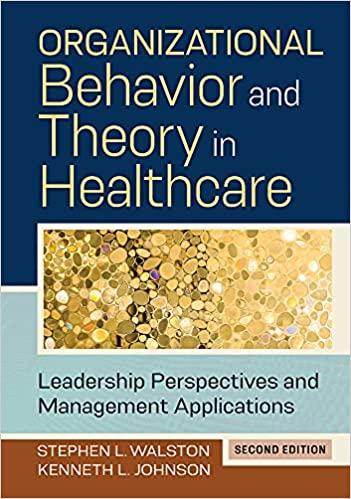What human resource policies contributed to the problems at Theranos? Theranos was a privately owned health technology
Question:
What human resource policies contributed to the problems at Theranos?
Theranos was a privately owned health technology corporation. It claimed to be able to perform rapid, low-cost blood tests with tiny amounts of blood, such as from a fingerstick, using small automated machines that the company had developed. Theranos was founded in 2003 by Elizabeth Holmes, who had dropped out of Stanford University. Through its founder’s exceptional self-confidence and good connections, the company raised more than $700 million from venture capitalists and private investors.
At its peak in 2013 and 2014, Theranos had a $10 billion valuation and was positioned as a revolutionary breakthrough in the blood-testing market, where the US diagnostic-lab industry posts annual sales of over $70 billion.
Its story is one of innovation, misplaced leadership, a toxic culture, intimidation, confirmation bias, and, perhaps, outright fraud.
Elizabeth Holmes always wanted to be successful and do something purposeful with her life. She came from a distinguished family. She attended elite private schools and excelled academically. She was admitted to Stanford in 2002 as a President’s Scholar and majored in biochemistry engineering.
Although she did well in school, she was much more interested in making money—lots of money.
Her first idea came during her sophomore year, when she started her company Real-Time Cures with the idea of an arm patch that would diagnose and treat medical conditions. She soon changed the name of the company to Theranos—a combination of therapy and diagnosis. She leveraged her family connections for start-up capital, impressing potential investors with her energy and her vision of applying nanotechnologies to diagnostics. Her novel patch would draw blood from the skin with microneedles, analyze it, deliver a precise amount of medication, and communicate the findings to the patient’s doctor. By the end of 2004, this 19-year-old college dropout had raised $6 million to launch her company.
Step by Step Answer:

Organizational Behavior And Theory In Healthcare Leadership Perspectives And Management Applications
ISBN: 9781640553026
2nd Edition
Authors: Kenneth L. Johnson, Stephen L. Walston




